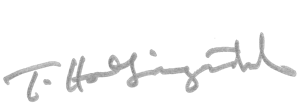NOISE PRINTS
In this series entitled “Noise”, Hollingsworth explores the interiority of the camera itself, its ways of looking on our behalf, which we come to feel as our “normal” mode of seeing. Abstract and textural, these images suggest woven fabrics. In fact, they are visual records of the camera’s internal digital processes—how a camera works. In essence, Hollingsworth is locating his eye “inside the body of the camera”—so that the camera as our “eye” --not the world, and not a digital editing-program--is what produces the visual information. In these abstract/physical images, most representational content is emptied from the picture. Light spots or streaks are the only exterior referents, signaling the environment in which these images are produced, the patterns that the camera ”sees” when we ask it to look and record on our behalf. Color is controlled by the camera’s pre-set Kelvin-temperatures. Exposure settings are shallow, and so, in order to reveal the “patterned noise” underneath a dark image, the photographs become hyper-exposed. Accordingly, the sensor-bindings of the digital camera almost entirely blanket the image-field, and a grid of light (or blips of light, bright information) emerges, as a kind of glowing visual net, or fabric-like texture.








